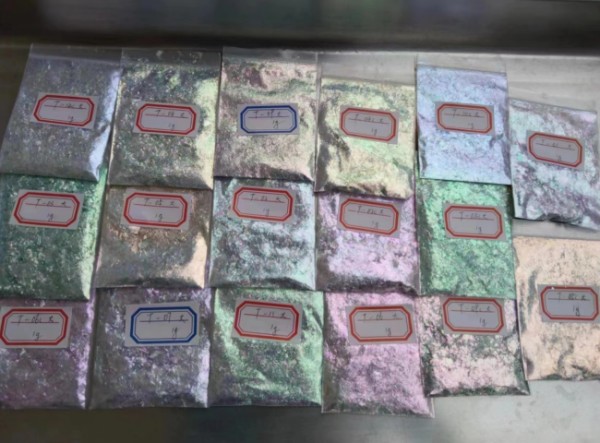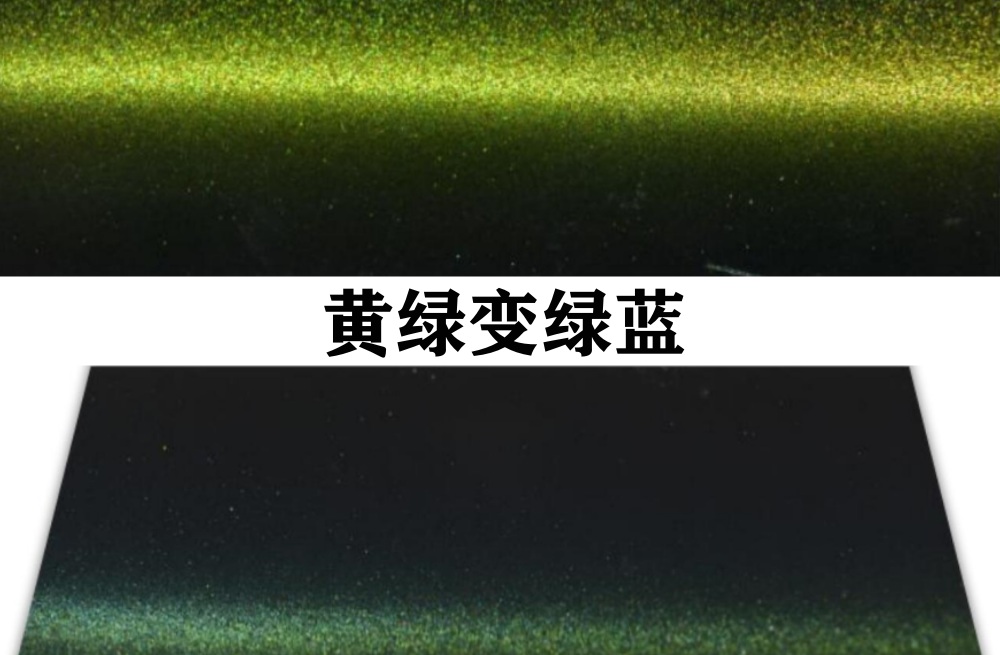Optically variable pigments are high-tech products that have a wide range of applications with the development of China's economy and technological innovation, such as in fields including anti-counterfeiting of cigarette packages and tickets, nail polish, personalized packaging, and more. In these applications of optically variable pigments, one critical process is how to select solvents and formulate them properly. In this article, we will provide a detailed analysis of the impact of solvents on the color density and color changing properties of optically variable inks and coatings.
- The impact of the refractive index of solvents on the color density of color-changing inks (coatings):
The refractive index of microcapsules in optically variable pigments is usually between 1.50-1.54. When the solvent is xylene or benzyl alcohol, and its refractive index is the same or similar to that of the pigment, the color density is higher, as the refractive indices of xylene and benzyl alcohol are 1.496 and 1.493, respectively. Conversely, the color density is lower when the solvent is propanol, isopropanol, acetone, ethyl acetate, butyl acetate, or diethylene glycol monomethyl ether, as their refractive indices are 1.386, 1.377, 1.359, 1.372, 1.394, and 1.392, respectively. However, when optically variable pigments are applied to color-changing inks, the impact of solvents on the color density is temporary. Once the printing work is complete, the solvents in the ink layer will gradually evaporate naturally, and the impact on color density will disappear.
- The impact of solvents on the color changing properties of pigments
Different solvents have different effects on the durability of optically variable pigments. Some solvents will not affect the color-changing properties of the pigments even after soaking for six months. However, some solvents can corrode and penetrate the surface and internal structure of the microcapsules in a short time, causing the color-changing effect of the pigments to fade or disappear. After the solvent evaporates, some color-changing properties can be restored, while others cannot. The factors that influence the effect can be categorized into two aspects:
(1) Solvents with fewer than three carbon atoms have a highly destructive effect on optically variable pigments, while solvents with more than six carbon atoms have a very low destructive effect.
(2) The impact of low temperature is small, while that of high temperature is significant. The following chart explains the detailed impact of solvents on the erosion and destruction of optically variable pigments under a 20-degree environment, which can provide valuable reference, but actual formulated data should be relied upon.
| Methanol | DMF | Ethanol | Acetone | n-Propanol | Isopropyl alcohol | Ethyl acetate | Butanone | Ethylene glycol diethyl ether | Butyl acetate |
| Within 5 hours | Within 2 days | Within 2 days | 10~60days | 20~90days | 1~6months | 2~5months | 3~6months | 3~10months | 3~10months |
| Water (PH2-8) | Toluene | Cyclohexanone | Benzyl alcohol | Gasoline | Mineral oil | Turpentine | Plasticizer DOP | Xylene | Cyclohexane |
| 36months | 12months | 12months上 | 12months | 12months | 12months | 12months | 12months | 12months | 12months |
HiBlueStar
电话:15050450799(微信同号)
© HiBlueStar Sitemap





